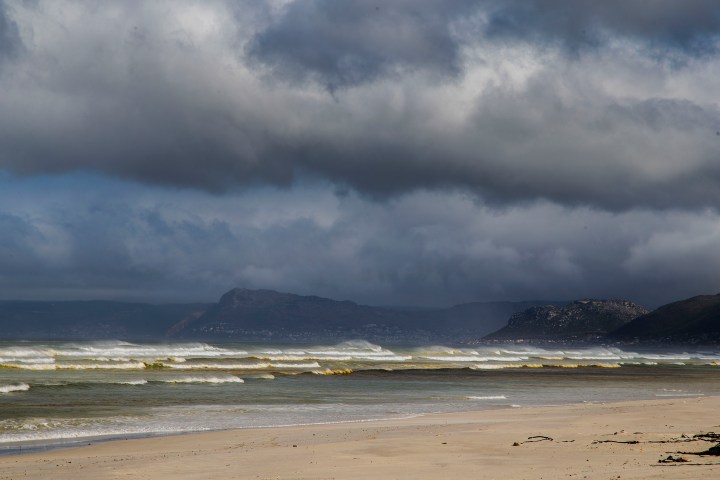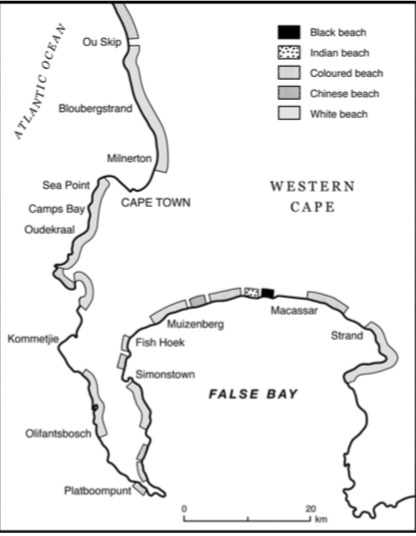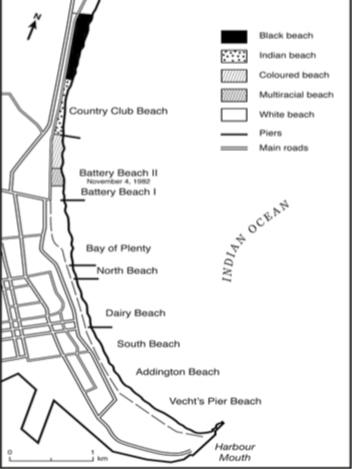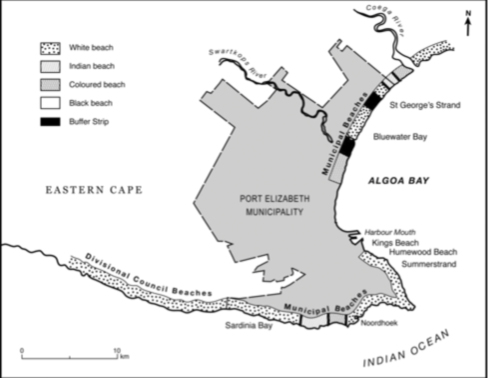Perspective
I swim where I like? Or does beach apartheid linger on?

When will our coasts and cities have housing for all so that black people are not still temporary beach sojourners, there on a few days a year and who still have to take the expensive and long trips to swim where they like?
I swim where I like, but never at Clifton because the water’s too cold. And sometimes, the people are too. It is a beautiful beach, but its Gini Coefficient is too crude to make it much fun.
The property owners, of what must be the world’s most expensive “bungalows” as residents bill their homes, have sealed up access so it’s not an easy walk to beach freedom and the wealth gap it represents is kind of gross.
Being Piscean, I am a natural beach bum, happiest on a wave or in water – and I know the Cape Town coastline, thanks to two aunties. Nowadays, with one of them, my dear aunt and friend, Daria Survé, we tend to hug the warmer coastline of False Bay where Fish Hoek, Muizenberg and Danger beaches deliver the best waves and where the succession of tidal pools are a cool and salty delight.
Daria first took me to Dalebrook tidal pool in St James where the Randlords turned fishing pools and whitewashed them for the families they would bring to the area they liked to think of as Brighton in Africa. Brighton in the UK is a coastal town that the likes of Abe Bailey and Cecil John Rhodes, among other mining magnates made rich by the gold rush, tried to copy at Muizenberg and along the gorgeous False Bay coastline.

Racially demarcated beaches in Cape Town. Circa 1970. Jayne M. Rogerson ( Bulletin of Geography. Socio–economic Series / No. 35 (2017): 93–109)
It was all white back then and all the way until 1990 when beach apartheid was formally ended, but today it’s Daria’s swimming haven and it is a mixed masala of people across class and colour, with whom we enjoy kicking up water. She has been going to Dalebrook by train for over 10 years, taking a trip at least twice a week in the summer, a freedom a far cry from the time her family was turfed off the beach at Sunrise Circle in the 70s.
That memory is as sharp (and perhaps as painful) for her as if it had happened yesterday. Most South Africans carry this beach history which is why the Clifton episode resonates as it does, even as the facts of the matter are still being probed.
Another aunt who recently died first taught me to swim where I like and to thumb our noses at beach apartheid. Janey Halim, who passed away in 2018, was a warrior and a beach warrior. A veteran of the liberation movement, she was a beloved aunt.
One year, in the 70s, kids on Muizenberg Beach called us “coffees”, her daughter Tasneem Essop remembers. All I remember is Aunty Janey giving one of them such a snotklap, it’s still legend in our family.
I learnt three things from that event – never to be rude to Aunty Janey, to stand up against racism, big and small, and to swim on God’s beaches when and how I wanted. My aunt delivered the lesson in the late 70s as the resistance to beach apartheid grew.
As a kid growing up under that pernicious system, there was a lot that got under the skin, but the divided beaches were right up there with the worst indignities. Beaches are places of fun, but also of pain, which is why they are often the centrepiece of debates about race.
In Durban, long before Aunty Janey’s lesson, I remember driving past the pretty beaches longingly only to have my dad or brother end up parking at the coloured or Indian beaches much further down. The currents were stronger and the bluebottles abundant; the wind windier. History will show that beaches for black people were often positioned near sewage outflows, by harbours where oil spills were regular and in other less than salubrious parts of the coastline.

Racially demarcated beaches in Durban, 1982 Source: Adapted after Møller, Schlemmer, 1982. ( Bulletin of Geography. Socio–economic Series / No. 35 (2017): 93–109)
In the article Kicking Sand in the Face of Apartheid in the Bulletin of Geography, Jayne Rogerson traces the history of beach apartheid and shows maps of how beaches were segregated. She quotes an article written at the time of beach segregation which found that the “worst beach (in Durban), with the most dangerous backwash, with no toilet facilities, was set aside for Africans”.
Even in the oceans where the water was not divisible like the land or property or schools or jobs, apartheid’s mad bureaucrats managed to divide the coastline. They achieved this through an amendment to the Separate Amenities Act.
“The rise and enforcement of beach apartheid must be understood as a fragment of the complex architecture around the institutionalisation of segregated spaces throughout the apartheid era,” writes Rogerson. The amendment to the separate amenities legislation defined land as including the sea and the seashore.
“The 1960 amendment stated that the sea is the sea and the bed of the sea within the three-mile limit and that the sea-shore is the land situated between the low-water mark and the high-water mark.”
Rogerson’s maps, drawn from other studies, reveal that after the amendment was passed, the apartheid spatial planners really went crazy cutting up the coastline into ethnic enclaves, reserving beaches for Africans, Indians, coloureds, whites and even Chinese people.
The whites got the best beaches; the Africans got the arse-end where the currents were dangerous and the amenities appalling. The maps tell the sorry story.

Racially segregated beaches in Port Elizabeth Circa 1970. Jayne M. Rogerson (Bulletin of Geography. Socio–economic Series / No. 35 (2017): 93–109)
In Parliament, Rogerson quotes the opposition politician Helen Suzman who opposed the legislation and remarked that: “If one surveys the whole scene in the Cape Peninsula, one finds that it is a disgraceful scene of discrimination because hardly any decent or accessible beaches have been set aside for the coloured people…
“On the other side of the Peninsula, people who have been moved from places under the Groups Areas Act have to travel from many miles and make expensive journeys before they can reach our sea-shores…”
Suzman lost the battle in 1972 and history will show that white communities across the country battled against the beach apartheid resisters too – a lot of the resistance was about how black males would gaze on white females.
In a survey in 1982 on whether or not beaches should be opened in Durban, only 25% of whites favoured complete integration of beaches, says Rogerson. She writes that: “Across the major coastal centres of South Africa the demise of beach apartheid was geographically uneven and punctuated by several local episodes of resistance, petitions and referendum.”
Today, it is all different, but also still the same.
It’s different because our beaches are often a delightful smörgåsbord of beautiful humanity doing its beach thing. My favourite summer thing is a Dalebrook picnic with Daria with bread from Olympia bakery in Kalk Bay, a hippy enclave with great food, and corned beef from a Rylands butcher, the formerly Indian neighbourhood with fabulous meat.
The apartheid planners have been roundly defeated and the idea of separate amenities which sought to define even the oceans as land so that it could be separated is legislation of history.
But is beach apartheid really over? The incident at Clifton in December when private security cleared beachgoers shows it is not because it reveals how public space is often still cleaved by class, race and the money.
As ANC manifesto after manifesto says every year, the apartheid that has not yet been vanquished is spatial apartheid – how are our cities and towns planned to unite people?
How accessible is Clifton beach to the public really? How safe is it for all South Africans? When will our coasts and cities have housing for all so that black people are not still temporary beach sojourners, there on a few days a year and who still have to take the expensive and long trips to swim where they like in the way Suzman opined against so many decades ago? DM


















 Become an Insider
Become an Insider